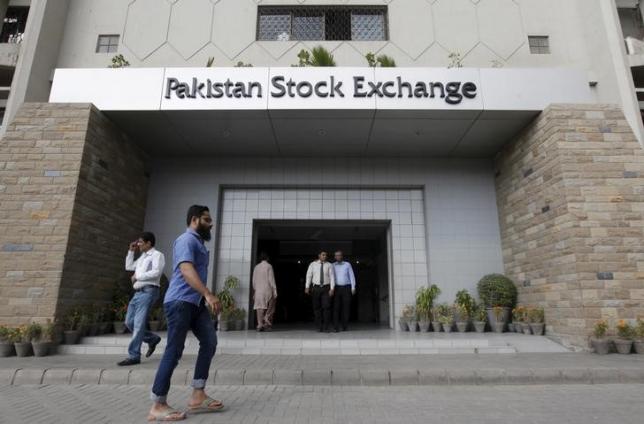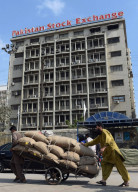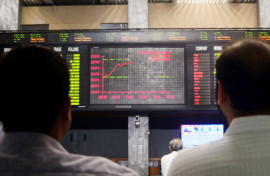
KARACHI: A year-on-year increase of less than 0.2% in the market capitalisation of a bourse over 11 months can be called anything but exceptional.
Yet the spin masters at the Ministry of Finance dubbed the 5.4% rise in the KSE 100-Share Index between July 1 and May 11 “relatively exceptional performance”.
According to Economic Survey 2015-16, foreign investment in the stock market exhibited a net inflow of only $38.5 million in the outgoing year, which reflects a year-on-year decrease of 85%.
The share market remained mostly lacklustre for the first nine months of 2015-16. Bullish sentiments in the last couple of months helped recovered some of the losses, as the year-on-year rise in the benchmark index clocked up at 4.8% for July-May. The economic survey blamed the drop in the stock market indices on the sharp reduction in the prices of energy and banking stocks, which account for a substantial share in the market capitalisation. “Those blue-chip heavyweights came under selling pressure mainly due to sale by foreign portfolio investors as part of their global equity sell-off in the emerging and frontier markets,” it said.
The Pakistani stock market performed relatively better than most of its peers in the first 10 months of 2015-16. The survey showed its benchmark index rose 0.9% year-on-year over July-April, which was the fourth highest annual increase within a select group of 18 economies of the world.
The annual economic review made no mention of the effects of major tax hikes on the stock market that the government enacted in the federal budget for 2015-16. Investors and brokers had protested those measures, but the government imposed them nonetheless.
For example, the government increased the rates as well as holding periods for the capital gains tax (CGT) for 2015-16. It also increased tax rates on dividend income from 10% for filers and 15% for non-filers to 12.5% and 17.5%, respectively. Moreover, the government imposed a 10% tax on the “undistributed reserves” of big listed companies in case they don’t pay dividends to an extent that their reserves exceed their paid-up capital after the distribution of dividends.

Analysts criticised the decision, as they expected it would hurt trading volumes on the bourse - an expectation that proved right in later months of 2015-16.
The apex and frontline regulators took major steps towards market development in the outgoing fiscal year. For example, the consolidation of Islamabad, Lahore and Karachi exchanges into a single national bourse is a feather in the cap of the federal finance minister who pushed the securities market regulator to complete the amalgamation process on an urgent basis.
The Securities and Exchange Commission of Pakistan (SECP) introduced a large number of structural, legal and fiscal reforms last year to improve governance and transparency in the capital markets. These reforms include Book Building Regulations, amendments to the Companies (Issue of Capital) Rules, 1996, Regulations for Research Analysts, and reforms for the Small and Medium Enterprises (SME) Board.
As many as three new companies were listed on the stock exchange in the outgoing fiscal year. Two debt securities were also issued during July-March.
According to the economic survey, the size of the mutual funds industry was Rs510.9 billion at the end of March as opposed to Rs492.2 billion at the beginning of the fiscal year, up 3.8% over the nine-month period.
Published in The Express Tribune, June 3rd, 2016.
Like Business on Facebook, follow @TribuneBiz on Twitter to stay informed and join in the conversation.


































































COMMENTS
Comments are moderated and generally will be posted if they are on-topic and not abusive.
For more information, please see our Comments FAQ